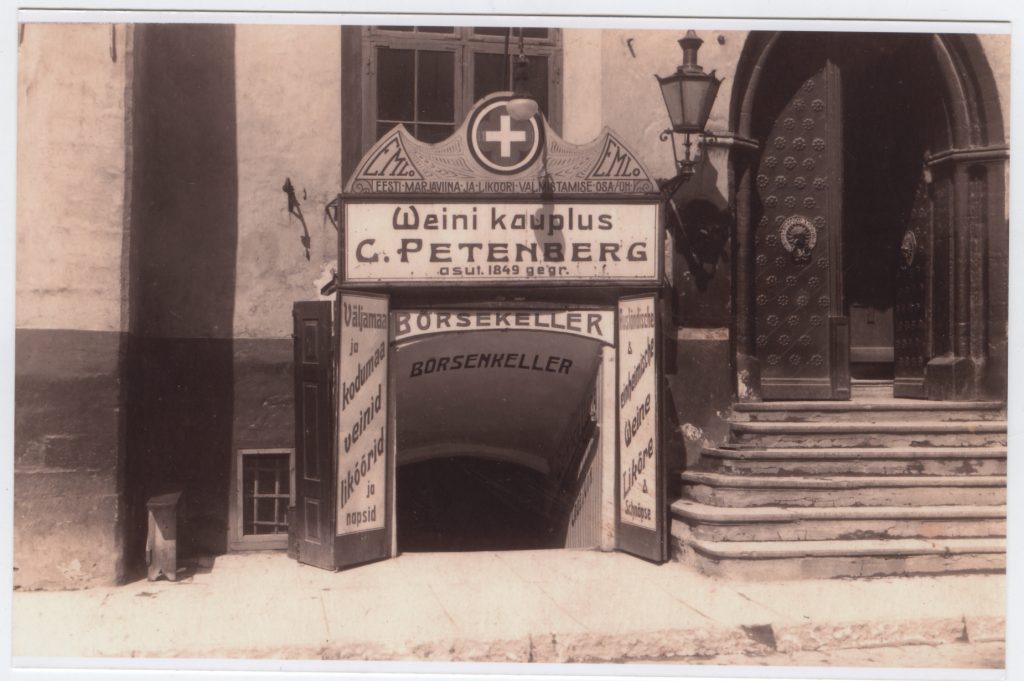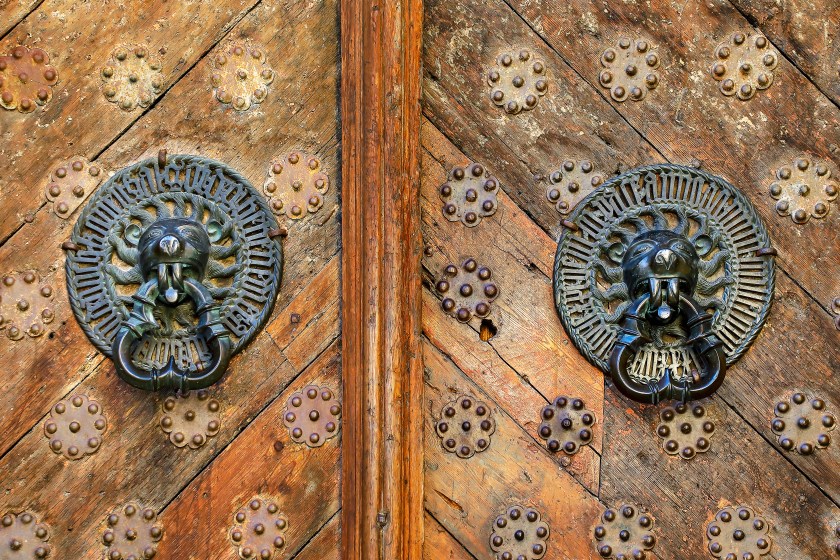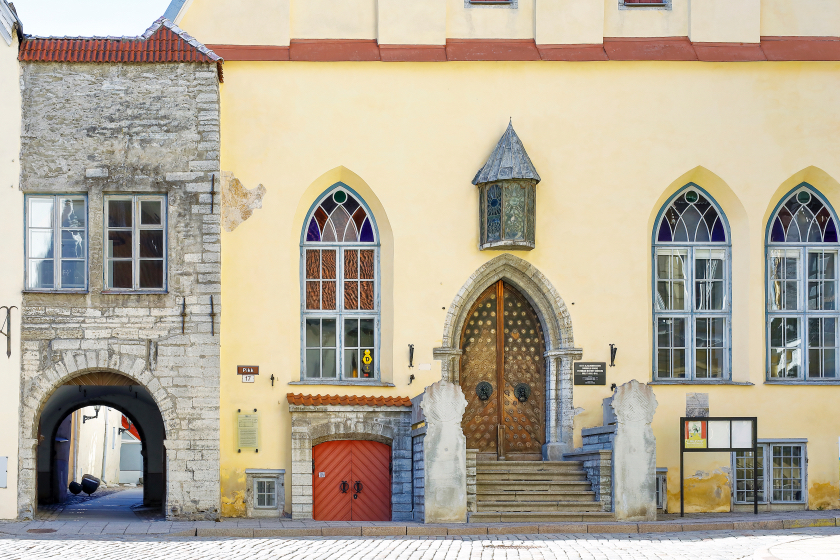Door knockers of the Great Guild Hall
1430
The building of the Great Guild, the organization of wealthy merchants, which operated from the beginning of 14th century to 1920, was completed in 1417. This spacious building in late Gothic style with high gable, located near the Town Hall Square, became an essential place for meeting and feasting. The door in sharp arched limestone portal is made of oak, decorated and reinforced with rosette forged nails, and has bronze knockers with the shape of a lion head, which are much older, dating back to the Middle Ages. Knockers with similar form language are common e.g. in Italy, while in Estonia these are rare, and these knockers are considered excellent example of medieval metalwork.
Lion was a beloved figure throughout the centuries. Furniture feet often imitated its paws, heads and statues of lions are frequent decorations on buildings, and this animal is also a popular guest on coats of arms. In these cases, the lion, called the king of animals, symbolizes courage, royalty, strength, dignity and bravery. The knocker on the right is surrounded by Latin lowercase script, meaning: „Anno Domini 1430. O glorious King Christ, come in peace“, while on the left there is a text in Low German: “God bless all in this house and yet coming here“. This is probably a work of the foundry of Merten Seifert.
The porch stones added in early 1980s highlight the importance of the front door and medieval romantic atmosphere. Currently the building is housing the Estonian History Museum, therefore the knockers are always drawing much attention.




